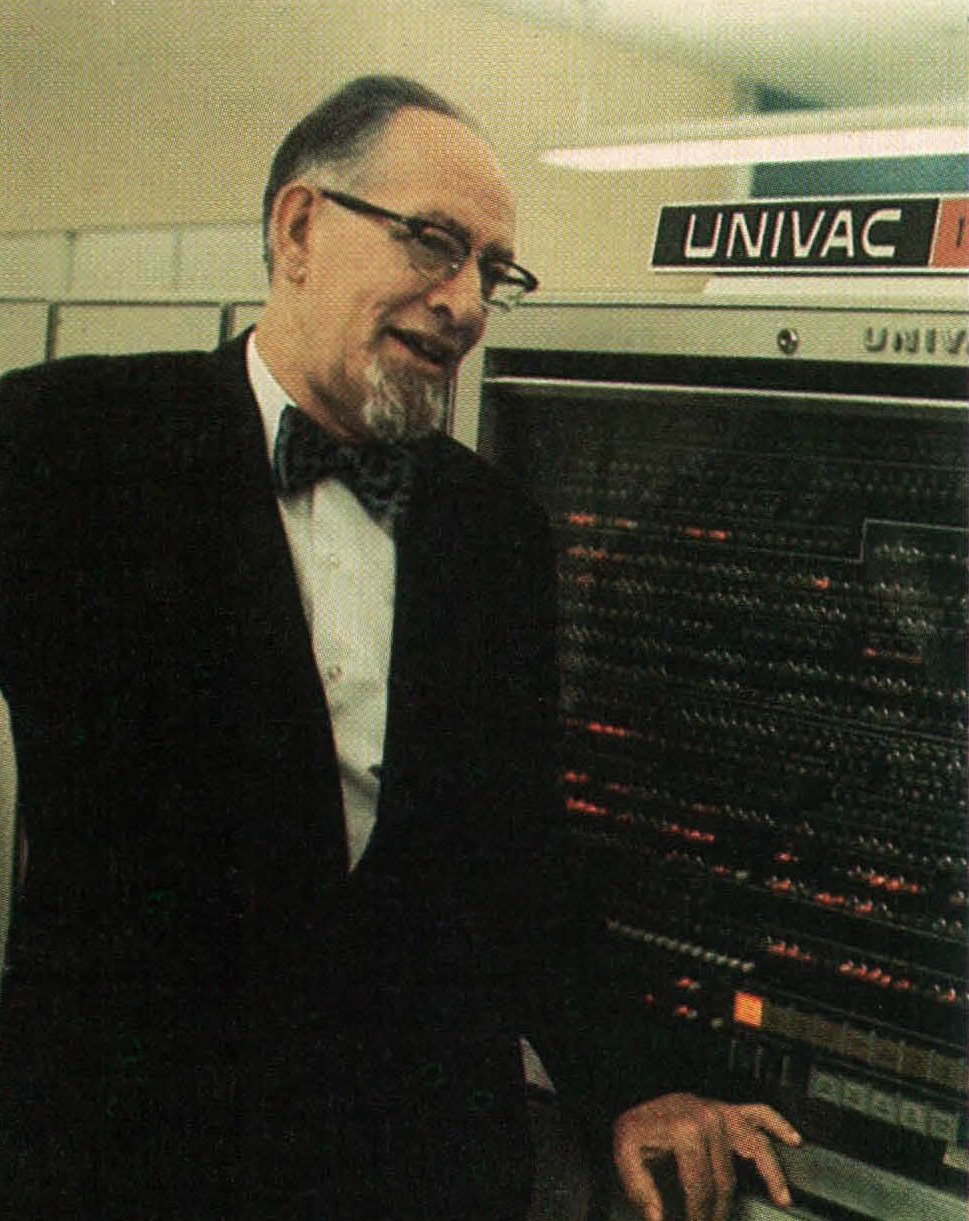
A convivial but nervous man, a chain smoker who consumed two or three packs of cigarettes a day, Mauchly inherited his love of science from his father, a physicist at the Carnegie Institution in Chevy Chase, Maryland. As a boy, he often visited his father’s laboratory, fiddling with the apparatus and puzzling over the lab’s records. At Johns Hopkins University, Mauchly started out as an engineering major – he liked to work with his hands – but he also enjoyed the theoretical side of science and soon switched to physics, specifically molecular spectroscopy. But the field didn’t quite prove to his taste; he spent most of his time working with an instrument called a mass spectroscope, identifying razor-thin spectral lines, generated by the thousands on photographic plates by heated substances, and analyzing the findings with the help of a desk calculator.
In 1932, he became an assistant professor of physics at Ursinus College, a small private school about twenty-five miles west of Philadelphia. At Ursinus, which lacked the elaborate scientific equipment of Johns Hopkins, Mauchly’s interests gradually shifted from spectroscopy to statistics, to meteorology, and finally to artificial computation. In 1936, he decided to see whether the voluminous records of atmospheric observations at the Carnegie Institution could shed some light on a major meteorological debate, one that continues to this day: do sunspots influence the weather, and if so, how’? With funds from the National Youth Administration, one of FDR’s employment agencies, Mauchly hired a small team of students to help him sift through the institute’s material.
After a while, Mauchly realized that it would take an eternity to collate the records by hand. Even if he could afford to lease a dozen punch card tabulators and sorters, the job would obviously take years. Then he got an idea – one of those astonishingly simple ideas that lay at the heart of scientific revolutions. At about the time he began his sunspot project, physicists had succeeded in developing electronic devices that could count cosmic rays. For years, the technical stumbling block to the invention of these machines had been the lack of recorders that could keep track of hundreds of cosmic events a second; at the time, most recorders were electromechanical, unable to register more than five hundred events a minute. Since there was only so much you could do to improve the performance of the recorders, physicists attacked the problem through the back door with “scaling circuits” that cut down on the number of pulses sent to the recorders. When, say, eight events struck the sensors, the first set of circuits dispatched four electrical pulses to the second set, which sent two pulses to the third ring, which in turn issued a single pulse to the recorder.
Mauchly wondered whether these circuits could be used to make a high-speed electronic calculator of some kind. He fashioned simple versions of the circuits and, by 1940, became convinced that they could do the job. (Actually, they couldn’t, but what he didn’t know at the time didn’t hurt him.) Unfortunately, he lacked the engineering skills and the money to proceed. Moreover, he tended to believe, along with most scientists at the time, that analog computing methods were more promising than digital ones; Bush’s differential analyzer had had quite an impact on the scientific community. Accordingly, Mauchly concentrated on analog machines, building, among other things, an analog electrical system for solving certain mathematical problems (Fourier equations) and a harmonic analyzer for studying meteorological phenomena.
In December 1940, Mauchly delivered a paper on his analyzer at a meeting of the American Association for the Advancement of Science in Philadelphia. One of the scientists in the audience was a physicist by the name of John V. Atanasoff. A professor at Iowa State College, Atanasoff also had been thinking about the potential of electronic computation. In fact, he was building a small special-purpose digital electronic calculator (which he called a computer or computing machine) that could solve simultaneous linear equations (such as x + y = 12; 2x – (y/z) = 14). Glad to have met someone who shared his interests, Atanasoff introduced himself, He told Mauchly about his work and invited him to Ames, Iowa, to see his invention. The two men corresponded over the next few months, and in June 1941, Mauchly drove to Ames.